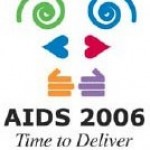Researchers at the XVI International AIDS Conference in Toronto have reported 48-week results from a phase II clinical trial of etravirine (TMC-125), Tibotec’s experimental non-nucleoside reverse transcriptase inhibitor (NNRTI).The new data, reviewed by Cal Cohen, MD, of the Community Research Initiative of New England in Boston at a poster session on Tuesday,indicate that etravirine may offer long-term effectiveness to patients who have tried and failed other HIV treatments, including currently approved NNRTIs.
The study (TMC125-C223) enrolled 199 HIV-positive patients who had failed regimens containing NNRTIs and protease inhibitors in the past. The study volunteers were randomized to one of two etravirine doses (400mg or 800mg twice-daily) plus an “optimized background regimen” (OBR) consisting of available HIV medications.These patients were compared to an “active control” group, in which patients cobbled together the best possible regimen using approved HIV medications.
By week 48, approximately 39 of the 40(98%) patients in the active control group had discontinued their selected treatment, mostly due to rebounding viral loads.In both etravirine groups, rebounds in viral load were only seen in 9%of the patients. Patients in the active control group remained on their selected treatment regimen for an average of 18 weeks, compared to an average of time on therapy of 48 weeks in the etravirine groups.
Dr.Cohen’s group also reported that 23% of patients in the 400mgetravirine group and 22% of patients in the 800mg etravirine group had viral loads below 50 after 48 weeks of treatment, compared to no patients in the active control group. Approximately 31% of patients inthe 400mg etravirine group and 34% of patients in the 800mg etravirine group had viral loads that were at least 1 log below their baseline results, compared to only 8% in the active control group.
Patients with the fewest HIV mutations conferring resistance to current NNRTIs – such as K103N and Y181C - had the most pronounced reductions in viral load. For example, in the 800mg etravirine group,patients with only one NNRTI mutation saw their viral loads reduced by1.67 log by the end of the study, compared to a 0.54 log reduction inpatients with HIV containing three or more NNRTI mutations.
As for CD4 counts(T cell counts), there was a 61 cell increase in the 800mg etravirine group and a 58 cell increase in the 400mg group. In the active control group, there was only a 13 cell increase.
Because most patients in the active control group discontinued their selected treatment relatively early in the trial, a true comparison of the side effects isn’t really possible. Looking only at patients in the etravirine groups, approximately 22% experienced diarrhea, 20%experienced some type of rash, 20% experienced injection-site reactions(caused by administration of Fuzeon®),and 20% experienced fever. Other reported side effects, occurring in greater that 10% of patients on an etravrine-containing combination,included fatigue, headache, and insomnia.
These data,Dr. Cohen reported, are encouraging. The results of etravirine’s larger phase III clinical trials, which are being conducted to support the anticipated 2007 approval of the drug, are eagerly anticipated.
Advertisement
Advertisement
Advertisement





Comments
Comments